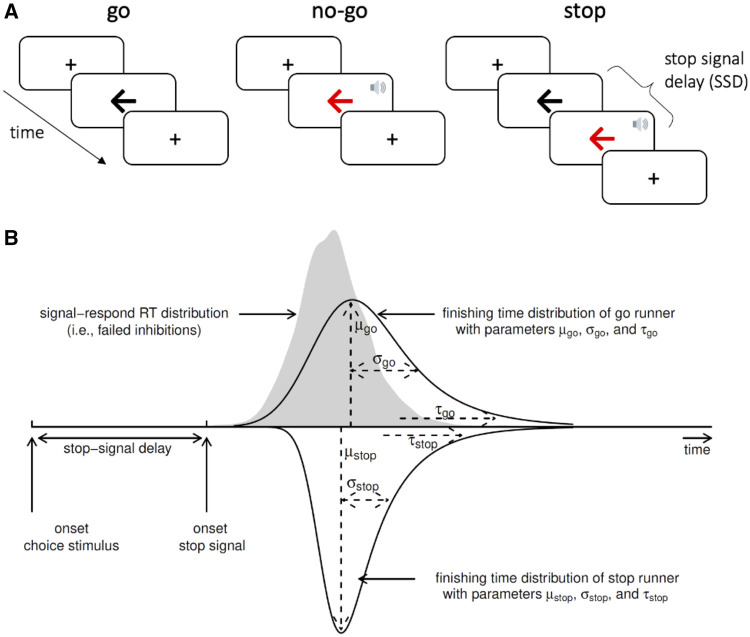Figure 1.
Design of the stop-signal task and ex-Gaussian race model of response inhibition. (A) In the stop-signal go/no-go task, participants respond as quickly and accurately as possible to the direction of a black arrow (go trials). Occasionally, this task is interrupted by a stop-signal (red arrow and beep tone), which requires any imminent response to be inhibited. For no-go trials, the stop-signal is presented immediately after the fixation cross. For stop trials, the stop-signal is presented after an initial go stimulus, with a short and variable delay. (B) The ex-Gaussian race model characterizes task performance as a race between three competing processes or ‘runners’: One stop process, and two go processes that match or mismatch the go stimulus. The finishing times of each process are assumed to follow an ex-Gaussian distribution. Successful inhibition in stop trials occurs when the stop process finishes before both go processes. A correct go response occurs when the matching go process finishes before the mismatching go process. For simplicity, the finishing time distribution of the mismatching go process is not illustrated. RT = reaction time. The speaker symbol in Fig. 1A was copied from the Twitter emoji library, available at https://twemoji.twitter.com/ under a CC-BY 4.0 license (https://creativecommons.org/licenses/by/4.0/). Figure 1B is from Heathcote et al.,57 and is available at https://flic.kr/p/24g3sip under a CC-BY 2.0 license (https://creativecommons.org/licenses/by/2.0/).

